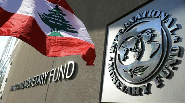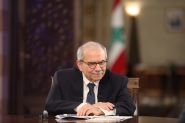
Poverty in Lebanon has more than tripled over the past decade, reaching 44% of the total population, according to a new World Bank (WB) report published on Thursday.
Based on a recent household survey covering five Lebanese governorates – Akkar, Beirut, Beqaa, North Lebanon and most of Mount Lebanon – the report reveals that one in three Lebanese in these areas was poverty-stricken in 2022. This underscores the crucial need to strengthen social safety nets and create jobs to help reduce poverty and tackle growing inequality.
The report, titled “Assessing Poverty and Equity in Lebanon 2024: Overcoming a Prolonged Crisis,” examines the current state of poverty and inequality in the country. It highlights the impact of the economic and financial crisis on households, as well as its effects on labor market dynamics. The report is based on a household survey conducted in collaboration with the World Food Programme (WFP) and the Office of the United Nations High Commissioner for Refugees (UNHCR) between December 2022 and May 2023, covering Lebanese, Syrians and other nationals (excluding Palestinians in camps and gatherings). Data collected covered demographics, education, employment, health, expenditure, assets, income and coping strategies.
The report reveals a significant increase in poverty in the areas studied – from 12% in 2012 to 44% in 2022 – also highlighting that poverty is unevenly distributed across the country. In northern Lebanon, for example, the poverty rate is 70% in Akkar, where most inhabitants are employed in agriculture and construction. Moreover, not only has the proportion of poor Lebanese tripled to 33% compared to ten years ago, but they have also fallen even deeper into poverty, with the poverty gap rising from 3% in 2012 to 9.4% in 2022. At the same time, income inequality among the Lebanese seems to be increasing.
The prolonged economic and financial crisis has forced households to adopt various coping strategies, including reducing food consumption and non-food expenditure, as well as cutting back on healthcare spending, with likely serious long-term consequences. To better reflect these changes in household behavior, the report adopts a new, unofficial poverty line developed for 2022; as the existing 2012 national poverty line no longer reflects the current consumption patterns or conditions faced by households in Lebanon today.
With the rapid expansion of a dollarized monetary economy, dollar-earning Lebanese households see their purchasing power preserved, while those without access to dollars are increasingly exposed to escalating inflation. Remittances from abroad have become a key economic buffer, rising from an average of 13% of GDP between 2012 and 2019 to around 30% in 2022 (partly due to a denominator effect) and increasing by 20% in nominal terms between 2021 and 2022.
“The current crisis in Lebanon urgently requires better monitoring of household welfare to develop and adopt appropriate policies,” said Jean-Christophe Carret, World Bank Country Director for the Middle East Department. “The Poverty and Equity Assessment highlights the crucial need to improve targeting of the poor and to expand the coverage and scope of social assistance programs to ensure that households in need have access to essential resources, including food, healthcare and education.”
The report also reveals that Syrian households have been hit hard by the crisis. Nearly nine out of ten Syrians were living below the poverty line in 2022, while 45% of poor Syrian families had food consumption scores below the acceptable level. The majority of working-age Syrians who are employed are in low-paid and precarious informal employment, contributing to impoverishment and food insecurity.
Based on a recent household survey covering five Lebanese governorates – Akkar, Beirut, Beqaa, North Lebanon and most of Mount Lebanon – the report reveals that one in three Lebanese in these areas was poverty-stricken in 2022. This underscores the crucial need to strengthen social safety nets and create jobs to help reduce poverty and tackle growing inequality.
The report, titled “Assessing Poverty and Equity in Lebanon 2024: Overcoming a Prolonged Crisis,” examines the current state of poverty and inequality in the country. It highlights the impact of the economic and financial crisis on households, as well as its effects on labor market dynamics. The report is based on a household survey conducted in collaboration with the World Food Programme (WFP) and the Office of the United Nations High Commissioner for Refugees (UNHCR) between December 2022 and May 2023, covering Lebanese, Syrians and other nationals (excluding Palestinians in camps and gatherings). Data collected covered demographics, education, employment, health, expenditure, assets, income and coping strategies.
The report reveals a significant increase in poverty in the areas studied – from 12% in 2012 to 44% in 2022 – also highlighting that poverty is unevenly distributed across the country. In northern Lebanon, for example, the poverty rate is 70% in Akkar, where most inhabitants are employed in agriculture and construction. Moreover, not only has the proportion of poor Lebanese tripled to 33% compared to ten years ago, but they have also fallen even deeper into poverty, with the poverty gap rising from 3% in 2012 to 9.4% in 2022. At the same time, income inequality among the Lebanese seems to be increasing.
The prolonged economic and financial crisis has forced households to adopt various coping strategies, including reducing food consumption and non-food expenditure, as well as cutting back on healthcare spending, with likely serious long-term consequences. To better reflect these changes in household behavior, the report adopts a new, unofficial poverty line developed for 2022; as the existing 2012 national poverty line no longer reflects the current consumption patterns or conditions faced by households in Lebanon today.
With the rapid expansion of a dollarized monetary economy, dollar-earning Lebanese households see their purchasing power preserved, while those without access to dollars are increasingly exposed to escalating inflation. Remittances from abroad have become a key economic buffer, rising from an average of 13% of GDP between 2012 and 2019 to around 30% in 2022 (partly due to a denominator effect) and increasing by 20% in nominal terms between 2021 and 2022.
“The current crisis in Lebanon urgently requires better monitoring of household welfare to develop and adopt appropriate policies,” said Jean-Christophe Carret, World Bank Country Director for the Middle East Department. “The Poverty and Equity Assessment highlights the crucial need to improve targeting of the poor and to expand the coverage and scope of social assistance programs to ensure that households in need have access to essential resources, including food, healthcare and education.”
The report also reveals that Syrian households have been hit hard by the crisis. Nearly nine out of ten Syrians were living below the poverty line in 2022, while 45% of poor Syrian families had food consumption scores below the acceptable level. The majority of working-age Syrians who are employed are in low-paid and precarious informal employment, contributing to impoverishment and food insecurity.
Read more




Comments